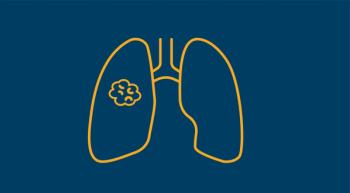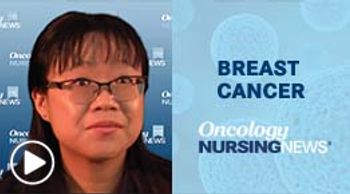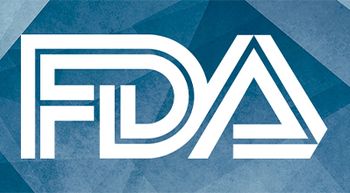
Cannabidiol oil may be useful in helping patients with breast cancer manage tamoxifen-related adverse effects.

Cannabidiol oil may be useful in helping patients with breast cancer manage tamoxifen-related adverse effects.

Oncology nurses can help their patients navigate misinformation that they may find online.

An economic analysis showed that neither polatuzumab vedotin nor CD19-directed CAR T-cell therapy are likely to be the most cost-effective for patients with diffuse large B-cell lymphoma based on their high costs and current long-term survival estimates.

Loperamide prophylaxis was linked to low rates of grade 3 diarrhea in patients receiving adjuvant pyrotinib, but better antidiarrheal prophylaxis options are still needed in this setting.

Glofitamab, an investigational CD20xCD3 T-cell engaging bispecific antibody, elicited encouraging response rates in patients with relapsed/refractory diffuse large B-cell lymphoma in a phase 1/2 study.

The FDA has approved nadofaragene firadenovec-vncg for patients with high-risk non-muscle invasive bladder cancer.

Mosunetuzumab, an off-the-shelf outpatient therapy with a fixed duration of treatment, demonstrated promising responses in patients with relapsed/refractory follicular lymphoma.

Mosunetuzumab is now an FDA approved treatment for patients with relapsed or refractory follicular lymphoma who have already undergone 2 or more lines or systemic therapy.

Non-Hispanic Black patients with hormone receptor (HR)–positive/HER2-negative breast cancer were more likely to have worse outcomes vs non-Hispanic White, Asian, and Hispanic patients, even with similar 21-gene recurrence scores.

Thank you for reading Oncology Nursing News® in 2022. We look forward to bringing you more news in 2023.

Maintenance therapy with rucaparib monotherapy improved progression-free survival compared with placebo. However, the treatment also significantly elevated anemia and neutropenia rates in this setting.

Caressa Valdueza, MSN, AGNP-BC, AOCNP, discusses toxicity management with unfolding treatment options in melanoma.

In the PEARL trial, monotherapy with durvalumab did not deliver a statistically significant improvement in overall survival vs platinum-based chemotherapy as frontline treatment in patients with PD-L1-high stage IV non–small cell lung cancer.

Physician involvement can determine how much patients benefit from services provided.

Neoadjuvant pertuzumab/trastuzumab increased the rate of pathological complete response in patients with HER2-positive breast cancer.

Oncology nurses work in a setting that might exacerbate any underlying mental health problems. Although getting through a shift may feel like the main goal, self-care and resiliency is equally important for the RN.

Heavily pretreated patients with Waldenström macroglobulinemia demonstrated encouraging responses with pirtobrutinib, a non-covalent BTK inhibitor.

Ellen Miller, MSN, FNP-BC, a nurse practitioner who specializes in survivorship care, underscores what conversations surrounding fertility and pregnancy may look like after radiation.

Grace Choong, MD; and Matthew Goetz, MD, discuss the effect of omitting adjuvant endocrine therapy for patients with estrogen receptor–positive breast cancer who were treated with neoadjuvant chemotherapy.

Patients with breast cancer may be at risk for more intense cognitive impairment following treatment with chemotherapy plus endocrine therapy.

In the second line setting, lisocabtagene maraleucel (liso-cel; Breyanzi) significantly reduced the risk of an event for patients with high-risk relapsed/refractory large B-cell lymphoma, compared with standard-of-care chemoimmunotherapy induction.

Camizestrant doubled progression-free survival compared with fulvestrant in patients with estrogen receptor–positive, HER2-negative advanced breast cancer.

Patients with early-stage, HER2-positive breast cancer who received both adjuvant ado-trastuzumab emtansine and concurrent radiotherapy did not experience a significant drop in ejection fraction or global longitudinal strain.

A combination of vusolimogene oderparepvec and nivolumab elicited early clinical activity in patients with cutaneous melanoma whose disease did not response to anti-PD-1 therapy.

Black mulberry extract may help patients manage oral mucositis, dry mouth, and weight gain, while receiving oral cancer medications.

The FDA has approved updated labeling for capecitabine under Project Renewal, an Oncology Center of Excellence initiative aimed at updating labeling information for certain older oncology drugs.

Capivasertib plus fulvestrant improved progression-free survival in patients who have hormone-receptor–positive/HER2-negative advanced breast cancer.

An ASCO/SIO expert panel outlined evidence supporting integrative therapies for adults. There is insufficient evidence in the pediatric population.

APRNs developed a discharge program which reduced readmission rates for patients receiving immunotherapy for advanced melanoma.

Encourage professional development, foster resiliency, and engage nurse leaders to create an environment that not only brings in new nurses, but keeps them.